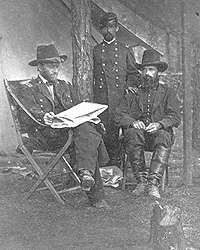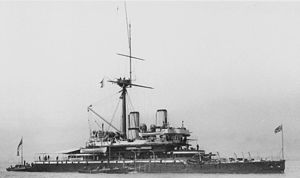6. Taming The West
Norton's Royal Guard facing off "Confederate Latewackers" in the Battle of Fort Tejon
Emperor Norton was eager to see what he could do as Governor of California. The former Governor of California, Frederick Low, would be his Lt. Governor. Norton would crush the outlaw environment in California, sending his militias across the state to put crime down. Not only that, but the Emperor of California was writing letters to the Hawaiian monarch, Kamehameha V, as they began getting closer and Norton would even visit Hawaii on behalf of the U.S later in 1868, where the friendship between the two men was strong and solid, having Norton making visits to Hawaii once every year. Back home, using the San Jose Massacre as a pretext, Norton would claim some mayors supported the death of those Americans, calling for them to be impeached, and rigging councils that were to impeach those mayors to remove them. New elections or a council would be held to determine the next mayor, Norton always had his influence within them so that the candidate he wanted would win. This trickery, however, would hurt the relationship between him and his Lt. Governor. The Democrats in California, many of them supporters of the deceased Haight, believed that California installed a dictator, and many of them, with their 2nd Amendment Right, promised by the constitution, held up arms against the Governor. This would only give Norton more of a pretext to remove his enemies, claiming them to be Confederate supporters and framing the people who held arms against him, late Confederate bushwhackers, and the eastern politicians believed him, even sending in troops from the occupied South to help.
The opposers, nicknamed "Latewhackers", roamed the south, assaulting cities and towns with mayors Norton installed. However, many skirmishes with Norton's militia and the military forced them from open conflict. Latewhackers pleaded any opposing politician of Norton to demand his impeachment, but those who were, either were too scared or already out of power. The last major battle before the Latewhackers resorted to guerilla tactics would be the Battle of Fort Tejon, where California militiamen on horseback massacred a Latewhacker force trying to storm Fort Tejon. Latewhackers soon had to stay on the run, as any town that supported them was not spared. The Latewhacker Uprising, as it was called, would only last three months, ending in January 1869. With the fall of the Latewhackers, Norton had complete control over California. The myth of Emperor Norton was consumerized by California businesses, with many shops selling Norton dolls and hats. A nephew of Joshua Norton himself, John Robert Norton, would make a name for himself, even fighting Latewhackers in the Latewacker Rebellion.
Photo of a young John R. Norton
John Robert Norton would enter the U.S at the age of 21. He found a new role model in Emperor Norton, with his father deceased by the time John was 3. While his family members had to adjust to what they saw as a crazy uncle or brother, John Robert Norton embraced the persona, addressing Emperor Norton properly. John was very involved with Joshua Norton's bid to be Governor of California. He traveled to many different cities, meeting with mayors and the common people to build-up Norton as a legendary figure, setting up his meetings as well. It was even said that John commanded a large part of the Royal Guard to San Jose, where he routed much of the enemy before being overwhelmed and injured in the shin. However, John's involvement in Norton's campaign pales in comparison with his involvement in the Latewhacker Rebellion. At this point, the state-supported militias have only been handling criminals during the age of the Wild West, never an actually formed militia, minus those of the Civil War. While many had much experience fighting in the Civil War, the militias themselves were not equipped to fight such forces on higher ground.
John rallied the gun industry in California to make higher quality weapons, raising funds from taxing loyal towns and raiding unloyal ones. He eventually supplied the entire Royal Guard with horses, even wagons for some, which were devastating during the Battle of Fort Tejon, where John's brother, Joshua Davis Norton, was killed. Filled with rage, John R. Norton led the Royal Guard to pillage the unfaithful towns, razing them to the ground, either killing or taking prisoner the entire town's population. After the uprising, John R. Norton practically set up a personal military dictatorship under the Governor of California, of the remaining towns. He set up rigged trials, killing many sentenced with treason by firing squad. He was given the nickname, "Red Robert" by many military officers. With the end of the Latewhacker Rebellion and the end of Mayor Teschemacher's term, Emperor Norton would seek to put the San Jose mayor somewhere else to fill a gap he wished to fill, and when the question was brought up who would be the next mayor of San Jose, emboldened by the fall of his enemies, nepotism was put into front stage with Red Robert being made Mayor of San Jose, where he injured his shin. While the city feared the man, with the history he had with the city, as well as his actions, John was rather laid back in his mayorship, allowing his underlings to do all the work for him, while he would seek to cooperate with other mayors to set up "Royal Guards" in other cities.
For the other two years of Norton's first term, Emperor Norton would be involved with the Department of California, the military sector responsible for what is now California, Nevada, and Arizona, even having their headquarters at San Francisco. Joshua Abraham Norton used his political influence to buy loyalty to many California fortresses and even wasn't completely influence-based after Joshua Norton sent militiamen to help part in the Hualapai War in Arizona. The militia was even able to decimate the last rebellious tribal band led by Chief Sherum, where he would be killed. It wasn't only the Department of California Norton was dipping his feet in. He followed the same tactic he did with the Department of California, with the Department of Oregon, responsible for today's Oregon, Washington, and Idaho. Norton would even befriend the former and first Commander of the Department of Alaska, Jefferson Columbus Davis, not to be confused with Confederate President, Jefferson Davis. Davis fought in the Civil War for the Union, but when he killed a General after a nasty, argumentative relationship with him, and although he wasn't put on trial due to the need for commanders during the Civil War, he never was able to gain a real promotion during the Civil War, until he eventually was assigned as Commander for the Department of Alaska.
Norton would soon easily win a second term for the Governor of California in 1871, easily beating opposing candidate, William Holden. Emperor Norton highlighted the importance of Californian unity under God and the effectiveness of the state-supported militia. Businesses were booming under Norton, and the people wanted more of the Emperor from San Francisco. In addition, Chivington would find success expanding all over California during Norton's first term as governor. Circuit riders from San Francisco spread their message north, all the way to Oregon. This spreading of the word's effectiveness was amplified by the fact that California militias were helping the Oregon populace with the natives, even the Emperor helped the Oregon governor, George L. Woods, make their own state-supported militias. God's Churches sprung up all overpopulated Oregon as churches for the most pious, devout followers of God. Norton would even help one of his old supporters, Newton Booth, to become the next California Senator, who defended the work done by Norton when some members of Congress questioned the rising influence of the Emperor, and by the end, the issue was put aside by both Congress and the President, many who saw Norton as helping develop and protect the American west.
Kintpuash "Captain Jack"
The first year of Norton's second term was really to secure good relations with the military, help funding for better conditions at the frontier's forts, where he even visited Fort Bragg and Humboldt during the Holidays. He integrated American veterans with the forts to give them fair employment again by being trainers, acting as captains and officers as well. The Emperor had the frontier's military and people on his side. Oregon and California militias would assist the Washington population against natives. A native uprising would occur in 1872, with members of the Modoc Tribe led by a native man nicknamed 'Captain Jack' revolting. The Modoc had a long history of conflict with the U.S and this won't change that. Captain Jack would soon set up a natural fortress, now called 'Captain Jack's Stronghold', where they were able to withstand an American force eight times larger with two howitzers. Peace talks were established, but the first meeting with Captain Jack turned violent, as he would kill General Canby, who was a part of the peace commission, as well as others, which caused the peace talks to end. A second battle would occur at Captain Jack's Stronghold, where the Modoc band were forced to retreat from their position. In the end, a U.S force led by Jefferson C. Davis was able to rout the Modoc forces and the Modoc War would end on 1873.
The Great Depression (Panic of 1873)
Jefferson Davis wished to execute the Modoc leaders where he stood, but the War Department called for a trial, so they had to wait. While waiting, it was discovered that there were large numbers of silver in the U.S and European colonies, devalued the silver standard in many global nations, including the United States. Sooner or later, banks that invested in railroaded weren't able to pay for bonds, and many would soon fail. Banks runs would occur, and soon, the Great Depression (Panic of 1873) would bring chaos to the U.S. While the east instantly faced the problems of the economic downfall, the west was effected more slowly, with news of the panic coming before the effects. Emperor Norton, who since his Imperial reign, sought to truely rule a nation. Be it he was a madman or a conniving genius, he sought power. The first thing he did strangely was to intercept the message from Grant to allow for Jack's execution. So, on the 12th of November, Emperor Norton with a band of supporters, including Jefferson C. Davis and multiple Californian and Oregon politicians, declared the attempted coup made to Ulysses S. Grant to take over the U.S and the Empire of California, taking the lands of California, Oregon, and later Washington in the 14th when soldiers led by Davis forced the Governor of Washington out of power with support of some Washinton militia.
----------
Yeah...I'm not sure if I'll keep writing for this TL. It's been a LONG while. I've only really come back to at least end this chapter on a decent cliffhanger if it were to not continue, but let me hear what you think!


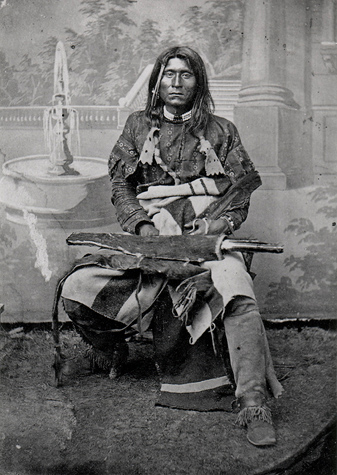
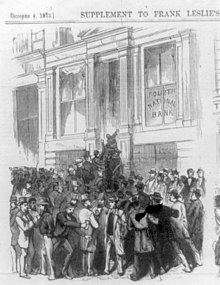

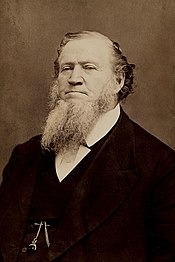





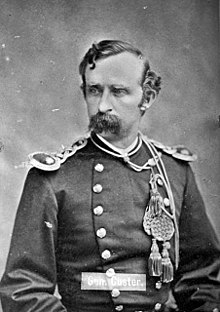
![m11-hay1-1877-480[1].jpg](https://libcom.org/files/images/history/m11-hay1-1877-480[1].jpg)

